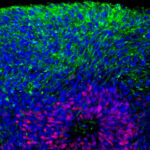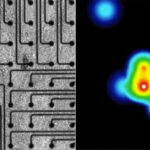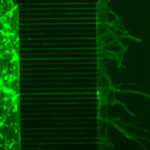
Neurodevelopment
The human brain has 100 billion neurons and is 3600 times larger than a mouse brain. To build a large brain, neural stem cells in the developing human brain go through many rounds of division and become diverse in their identity and trajectory. We study the fundamental mechanism of this process by exploring where diverse types of neural stem cells come from, and what they become.

Neurodevelopmental disorders like Autism and Epilepsy
Many genetic and environmental factors are thought to be linked to neurodevelopmental disorders. How the brain succumbs to these factors remains under studied, in large part due to the inaccessible nature of the developing human brain. We use “brain-in-the-dish” approach to recreate the genetic and environmental scenarios that lead to these disorders. By better understanding the vulnerabilities of the developing brain, we aim to find ways to prevent, delay and reverse these disorders.

Neural regeneration
The brain is complex, delicate, and susceptible to various types of injuries ranging from stroke, trauma, to many neurodegenerative diseases. Damaged brain cells, especially neurons, do not readily regenerate. We use functional genomic approaches to identify factors that can coax neurons into regrowing their damaged parts. We are also applying our knowledge of early development to encourage regeneration from the brain’s endogenous neural stem cells.

